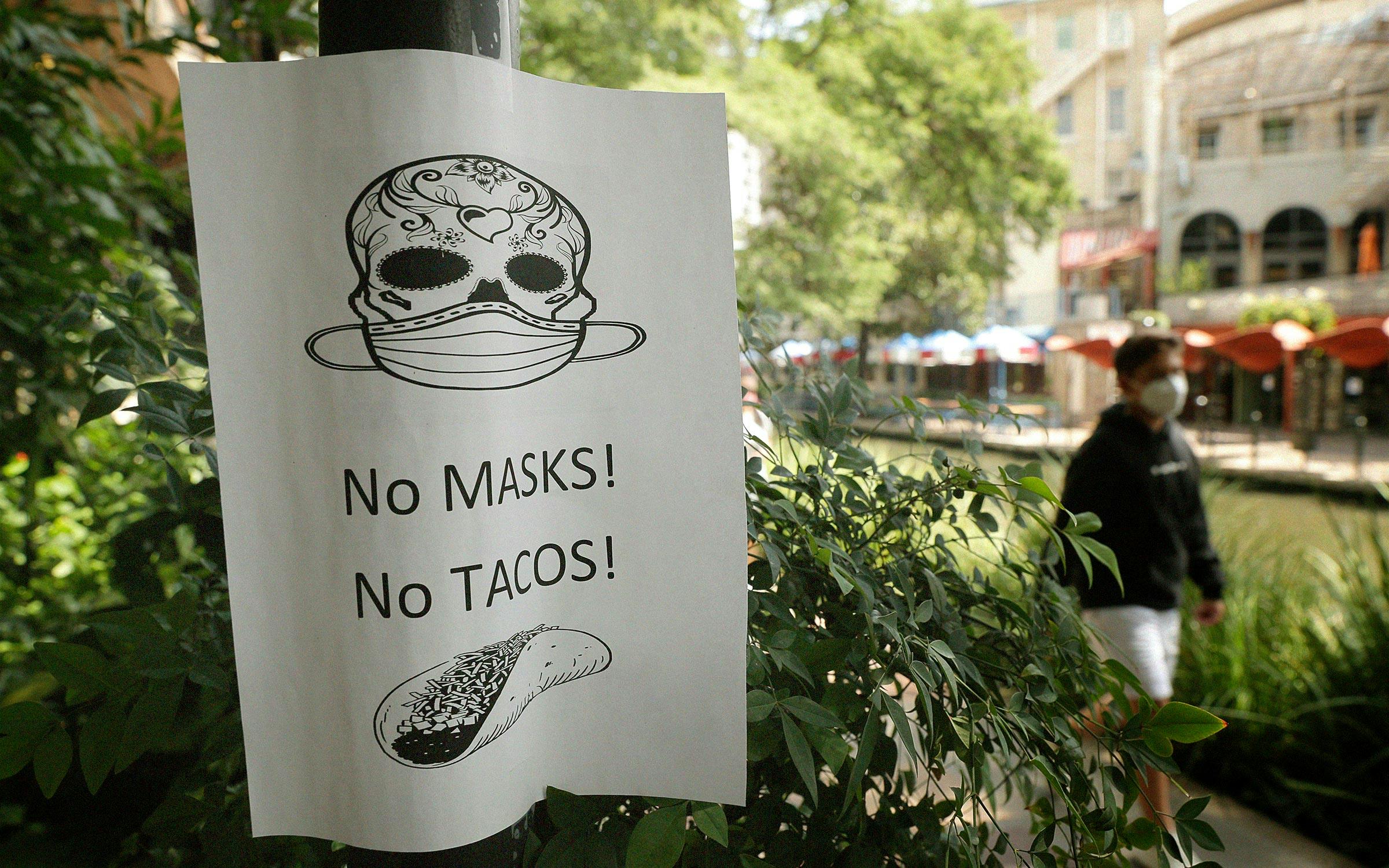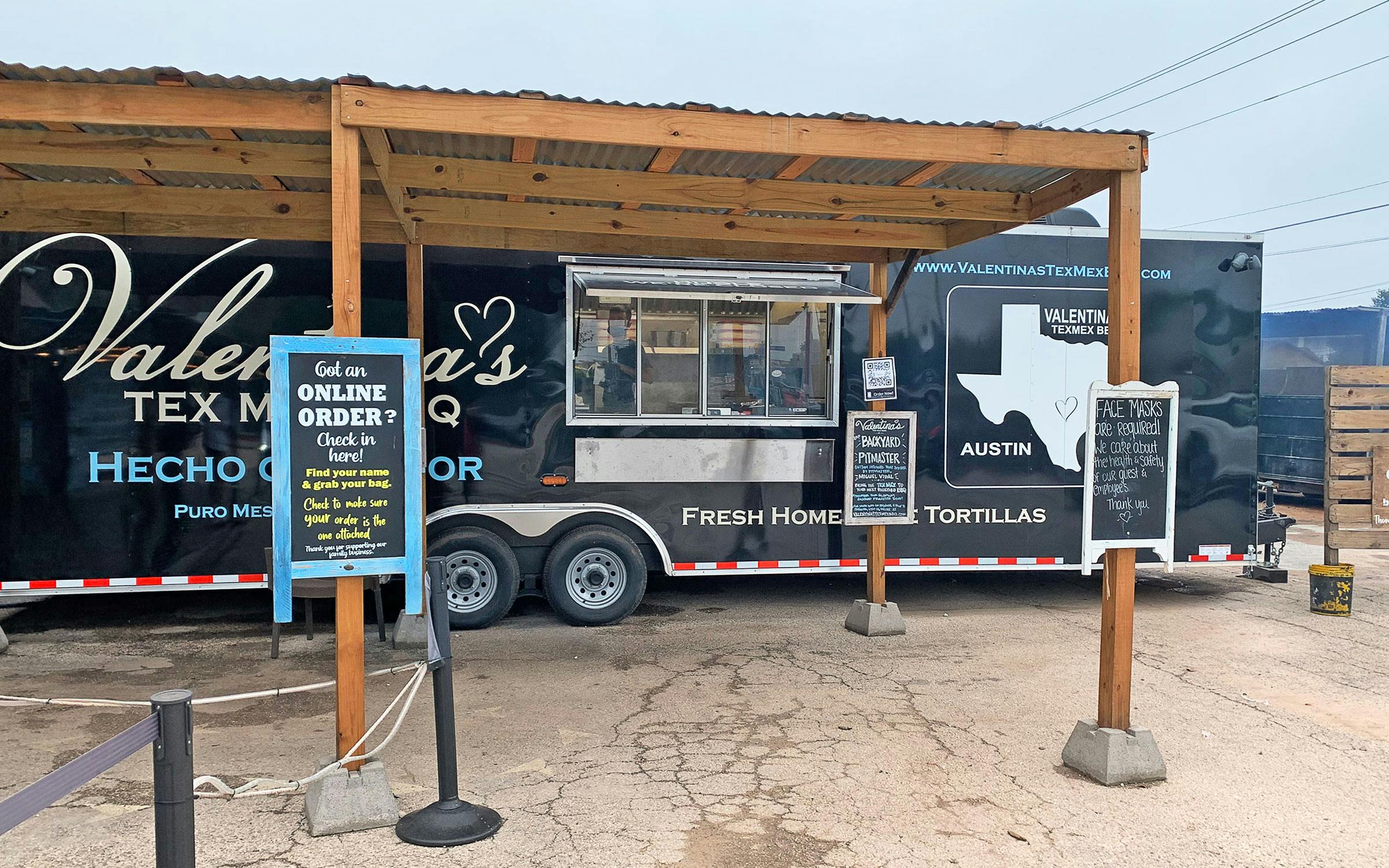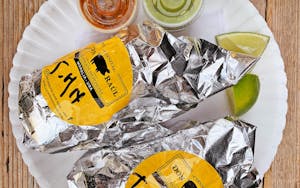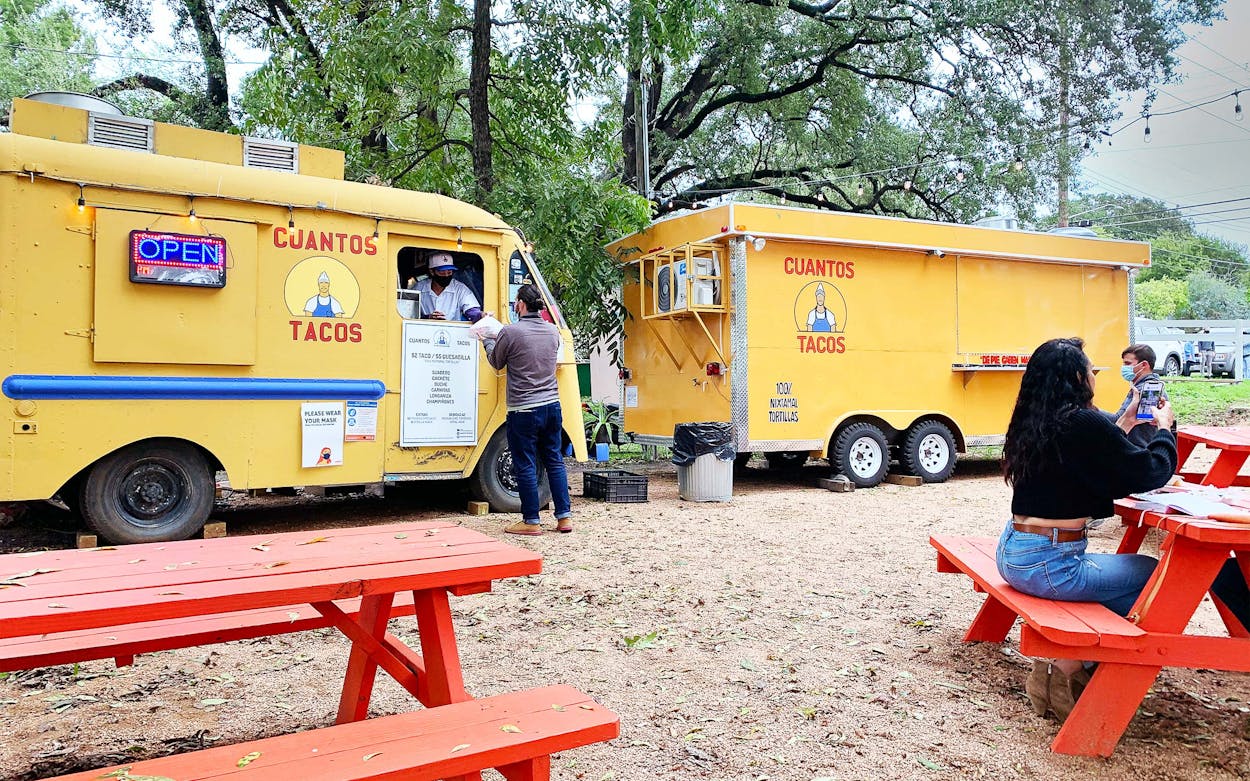Since March, as the COVID-19 pandemic has ravaged the state and the Latino community, safety has been constantly on my mind. I’m always thinking about how to protect my family and friends. My twelve-year-old son is at higher risk because of his asthma. Then there’s my dear friend Jon, a constant presence in my life for the last five years, whether we’re splitting tacos in El Paso or sharing Christmas dinner. He’s so close to my family that my kid calls him Uncle Jon. His wife has a health condition that puts her at higher risk, too. The thought that COVID-19 could fell my outspoken, smart-mouthed car geek of a preteen or Jon’s wife or my wife or anyone’s anyone, and that it could be attributed to my job as a food writer, makes it feel like my midsection is in the squeezing, tearing grip of a dragon’s claws. There is a real fear here, and I’m learning to live with it as I constantly evaluate how I do my work.
I still have a job to do, and I’m lucky to have the one I have. It’s not everyone who’s fortunate enough to hold the position of food journalist, much less that of taco editor. I’m aware that the job requires me to interact with other Latinos and visit places where I must decide if the risk is worthwhile. This past summer, the COVID case count was high enough in the Panhandle that I scrapped a trip. I changed plans again during a weeklong family vacation at a mountain cabin in southeastern New Mexico. As cases spiked in El Paso, along our planned route home to Dallas, the missus and I decided to take another way home. I take safety seriously. I hope you do too.
With that in mind, I’ve balanced monitoring local reports, county and state dashboards, CDC data, WHO data, and receiving the Johns Hopkins COVID-19 newsletter with reading articles by intelligent, knowledgeable journalists, including Texas Monthly’s own Dan Solomon. I’ve also kept up with COVID-19 stories by fellow food writers and critics. Ryan Sutton’s essay on why he isn’t reviewing New York City restaurants and his experience with COVID-19 is a worthy read, as are pieces by Patricia Escárcega of the Los Angeles Times (tackling the importance of context and storytelling) and Tejal Rao of the New York Times. Rao’s reporting has highlighted the real risks to employees’ lives when restaurants reopen.
It’s not all bad news. Here in Texas, our go-to cuisines are barbecue and tacos—both of which are easily eaten at a food truck, on an outdoor patio, or even sitting on the trunk of a car. All of these options are safer than dining inside with other customers. I was a germaphobe before I was a taco editor, so I was already doing all kinds of sanitizing practices while eating out or traveling: carrying sanitizing lotions and wipes, using those wipes to clean hotel room surfaces, and washing my hands every chance I get. Becoming accustomed to wearing a mask (properly!) took adjusting, sure, but it’s not hard, and the data is abundantly clear that masks slow the spread of the virus.
As I continue to go on taco excursions, I’ve noticed that tacos are more popular than ever during the pandemic. In an effort to make your tacoing experience a safer one, here’s what you should know.

Wear Your Mask, and Scram if Others Aren’t
If you enter a restaurant that is not enforcing or adhering to the statewide mask mandate, leave immediately. In my experience, this is disappointingly, frustratingly common in rural areas, and it’s not worth the risk. Don’t be afraid to politely ask employees or fellow patrons to wear their mask if they are not wearing one, or to please wear it properly if they’re wearing the mask on their chin, loosely, or under their nose. Failing that, take a photo of the lack of enforcement or adherence and send it to the restaurant owner via one of their social media accounts.
Take It Outside
Reconsider eating in restaurant dining rooms. The virus spreads more efficiently in enclosed areas, and the CDC even found that people who tested positive for COVID-19 were twice as likely to say they’d dined in as those who tested negative. Even when outside at a truck or trailer, if the line isn’t spaced six feet apart between customers or parties, as far as I’m concerned you might as well be indoors. Tell others to step back or leave. Think about not just of your family members, but those with whom they interact, as well as the taqueria staff’s family and their social circles. Think about everyone’s abuelita.

Go Local
When the hankering for tacos hits, consider the size of the business you want to patronize. Your dollars matter more at a family-owned restaurant, taqueria, or truck than at a chain restaurant. It’s even better if you decide to support a neighborhood spot. At home, I hit up Trompo for its eponymous northern Mexican spin on tacos al pastor, dark red pork that shimmers with a touch of orange and has a subtle smoky paprika kick. I also love Maskaras Mexican Grill for its crunchy, traditional Jalisco-style tacos dorados and ahogados.
Skip the App
Delivery apps like Grubhub and Chowhound are convenient, but they charge restaurants large fees that can severely cut into earnings. Whenever possible, use the phone and pick up the food yourself. Make sure you’re calling the restaurant’s own number, not a shadow Grubhub number. You’ll be safer picking up your meal if the restaurant has set up a plexiglass or vinyl shield that separates the cashier and customer. Many restaurants also offer their own delivery service.
Touch Less, Eat More
The reduction of contact points lowers the risk of COVID-19 infection, and online ordering for a scheduled, contactless pickup is the benchmark. Valentina’s Tex Mex BBQ in Austin is operating that way exclusively, as is Veracruz All Natural. It’s an excellent path to enjoying their signature brisket-topped Real Deal Holyfield breakfast taco and tortilla strip–studded migas taco, respectively. For places that don’t offer online ordering, call the restaurant to place the order and pay over the phone. Avoid cash when possible.
Be Prepared for Disappointment
Taquerias, along with other food trucks and trailers, often change their locations and hours of operation. That’s especially true during the pandemic. So before you make the trip, call the business or check its social media pages to make sure that it’s open and active. What was the latest post? When were hours of operations last updated on its Facebook, Google, or Yelp page? Often, the listed hours will not be consistent across platforms, in which case you might feel compelled to call. Some trucks and trailers don’t have business phones. Truth is, the best thing to do is visit the joint. Hopefully, it’s open! If the taqueria isn’t, sorry. The pandemic is unprecedented and perhaps an operation had to close for the day or, perhaps unfortunately, forever. Luckily, we live in Texas. There are thousands more to choose from.

Be Patient
Commission-free online ordering platforms such as ChowNow will confirm your order but will not provide a time for pickup. Instead, they’ll send the user a follow-up email when the food is ready. It can be frustrating, but it doesn’t have to be. Plan to go for a walk or drive around the immediate neighborhood. Perhaps you’ll find a taco gem in the rough and have time for an appetizer.
Trunk Tacos Rule
Tacos don’t travel well. My personal average time of travel tolerance is eight minutes. To counter that, I prefer to eat my COVID-19-era tacos perched on the trunk of a car or seated in the trunk space of a hatchback, as I did when I first began researching tacos in earnest. I get nostalgic and perhaps enjoy the tacos more. On a recent trip to Taqueria Poblana in Bryan, I savored the fatty, perfectly crispy tacos al pastor this way.
When I’m done eating, everything goes back into the plastic bag and into the nearest trash can. Bring a pocket knife or ask the taqueria staff for bagged plastic utensils for sharing with friends. It’s worth bringing your own plates and utensils too. Cut the tacos to share and enjoy. Do not eat or drink after anyone, not even after members of your household.
Travel Smart
If and when you level up to multi-day road trips, don’t leave the homestead without doing your research. When traveling with individuals outside your COVID pod, wear a mask while in the car or interacting closely. Have conversations about what safety measures you expect and about the risks you are collectively willing to tolerate.
The latest research shows that the risk of surface transmission is relatively low, meaning you’re more likely to catch the virus in a crowded hotel lobby than in your room. Call the hotel ahead of time to ask what safety procedures have been implemented. For example, the installation of plexiglass shields is commonplace at front desks. Try to use online check-in and keyless entry to your room. Locate the nearest non-lobby entrance to your room and use it instead of the main entry point. If you need to share a room with a friend, look for a two-bedroom suite such as those at Residence Inns. I like two-bedroom suites because they often include private bathrooms and are sometimes priced equally to one room with two queen beds. If leftovers are important to you, try to book a room with a fridge. Wash your hands each time you enter your hotel room. Try to do so before you touch anything else.
Once the trip is over, take a COVID-19 test and hunker down as much as possible for two weeks.








